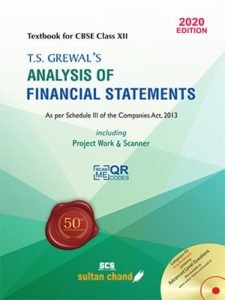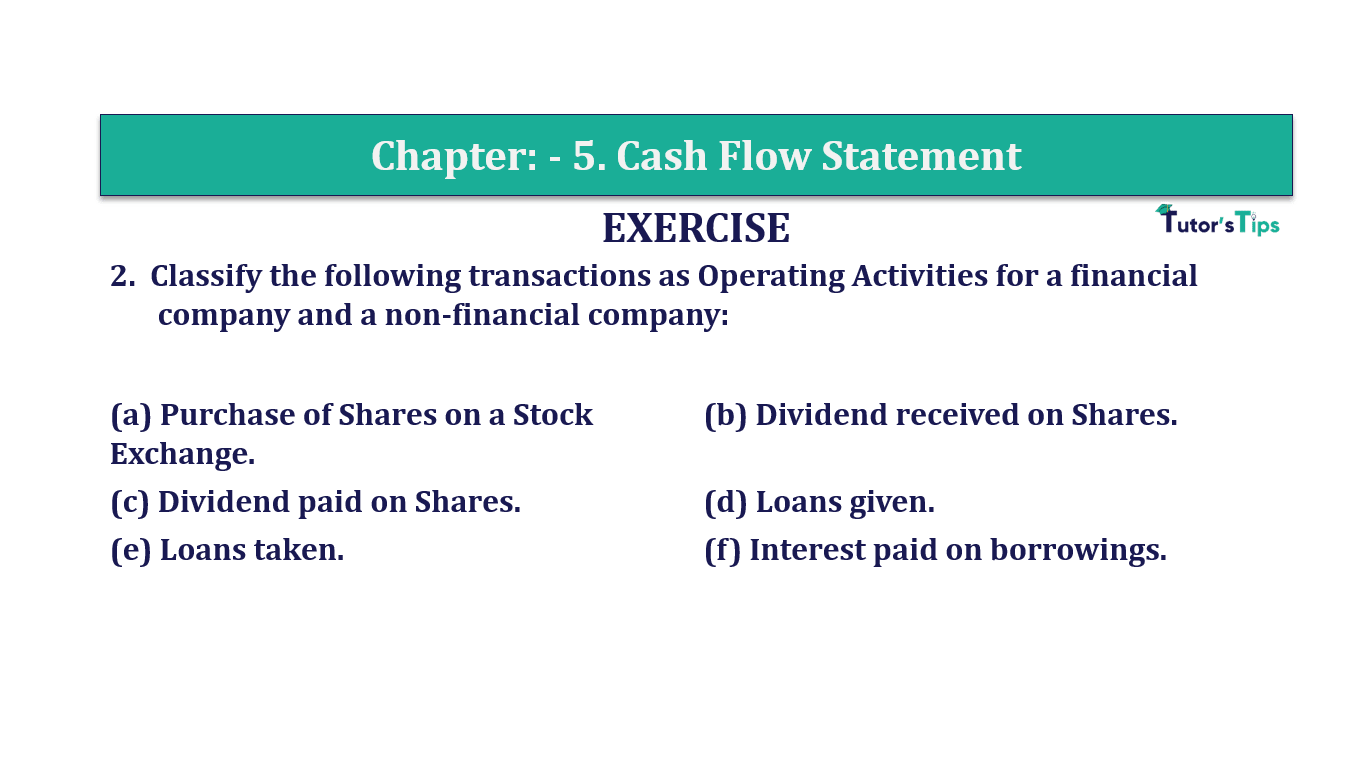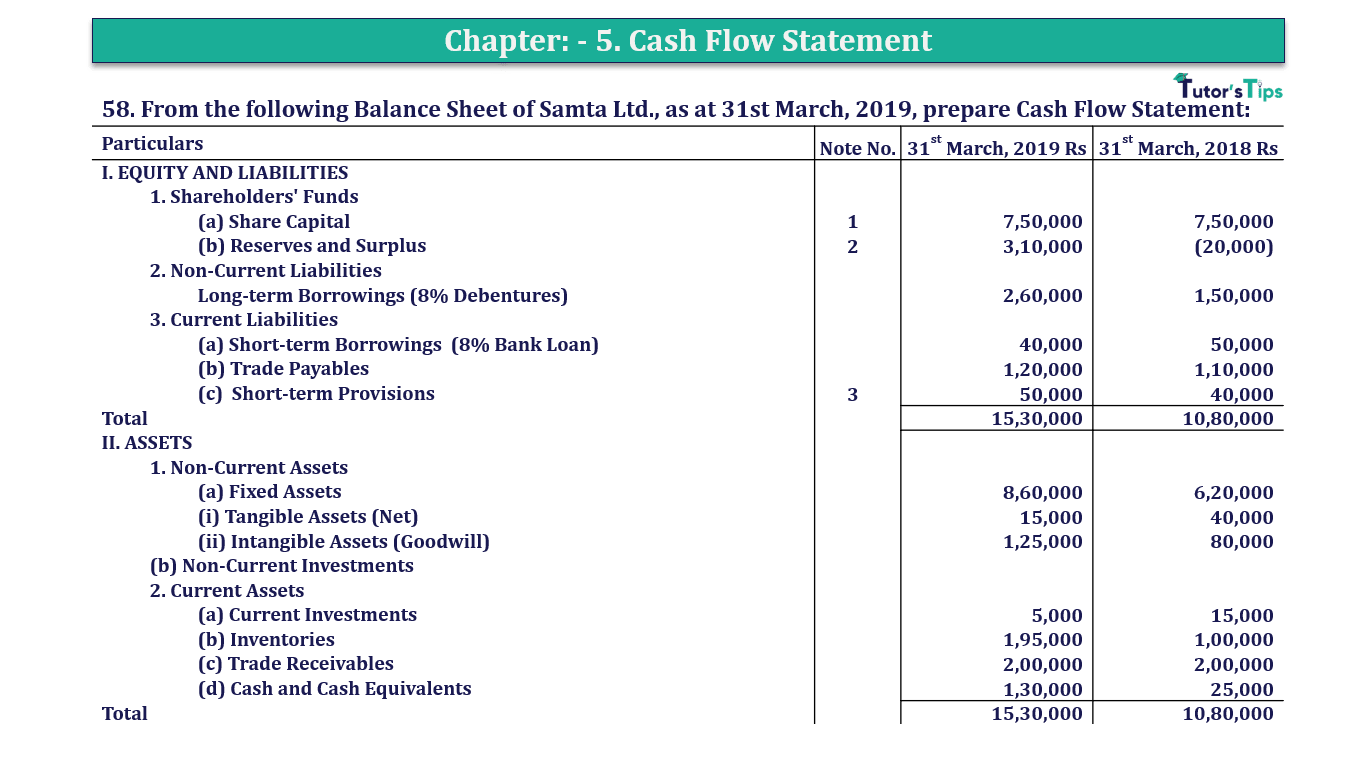Question 144 Chapter 4 of +2-B
Table of Contents
Miscellaneous
144. From the following, calculate (a) Debt to Equity Ratio; (b) Total Assets to Debt Ratio; and (c) Proprietary Ratio:
| Rs | Rs | ||
| Equity Share Capital | 75,000 | Debentures | 75,000 |
| Preference Share Capital | 25,000 | Trade Payable | 40,000 |
| General Reserve | 45,000 | Outstanding Expenses | 10,000 |
| Balance in Statement of Profit and Loss | 30,000 |
The solution of Question 144 Chapter 4 of +2-B: –
I
| Long-term Debts | = | Rs 75,000 |
| Equity | = | Equity Share Capital + Preference Share Capital + General Reserve + Balance in Statement of Profit & Loss |
| = | Rs 75,000 + Rs 25,000 + Rs 45,000 + Rs 30,000 | |
| = | Rs 1,75,000 |
| Debt – Equity Ratio | = | Long-term Debts |
| Equity |
| Gross Profit Ratio | = | Rs. 75,000 |
| Rs 1,75,000 | ||
| = | 0.43 : 1 | |
II
| Total Assets | = | Equity Share Capital + Preference Share Capital + General Reserve + Balance in Statement of Profit & Loss + Debentures + Trade Payables + Outstanding Expenses |
| = | Rs 75,000 + Rs 25,000 +Rs 45,000 + Rs 30,000 + Rs 75,000 + Rs 40,000 + Rs10,000 | |
| = | Rs 3,00,000 | |
| Long term Debts | = | Rs 75,000 |
| Total Assets to Debts Ratio | = | Total Assets |
| Long term Debts |
| = | Rs. 3,00,000 | |
| Rs 75,000 | ||
| = | 4 : 1 |
III
| Shareholders’ Funds | = | Equity Share Capital + Preference Share Capital + General Reserve + Balance in Statement of Profit & Loss |
| = | 75,000+25,000+45,000+30,000 | |
| = | Rs 1,75,000 | |
| Total Assets | = | Equity Share Capital + Preference Share Capital + General Reserve +Balance in Statement of Profit & Loss + Debentures + Trade Payables + Outstanding Expenses |
| = | Rs 75,000 + Rs 25,000 + Rs 45,000 + Rs 30,000 + Rs 75,000 + Rs 40,000 + Rs 10,000 | |
| = | Rs 3,00,000 |
| Proprietary Ratio | = | Shareholders’ Funds |
| Total Assets |
| = | Rs. 1,75,000 | |
| Rs 3,00,000 | ||
| = | 0.58 : 1 |
Thanks, Please Like and share with your friends
Comment if you have any question.
Advertisement-X
Also, Check out the solved question of previous Chapters: –
T.S. Grewal’s Double Entry Book Keeping +2 (Vol. I: Accounting for Not-for-Profit Organizations and Partnership Firms)
- Chapter No. 1 – Financial Statement of Not-For-Profit Organisations
- Chapter No. 2 – Accounting for Partnership Firms – Fundamentals
- Chapter No. 3 – Goodwill: Nature and Valuation
- Chapter No. 4 – Change in Profit-Sharing Ratio Among the Existing Partners
- Chapter No. 5 – Admission of a Partner
- Chapter No. 6 – Retirement/Death of a Partner
- Chapter No. 7 – Dissolution of a Partnership Firm
T.S. Grewal’s Double Entry Book Keeping (Vol. II: Accounting for Companies)
- Chapter No. 8 – Company Accounts – Accounting for Share Capital
- Chapter No. 9 – Company Accounts – Issue of Debentures
- Chapter No. 10 – Redemption of Debentures
T.S. Grewal’s Double Entry Book Keeping (Vol. II: Accounting for Companies)
- Chapter No. 1 – Financial Statements of a Company
- Chapter No. 2 – Financial Statement Analysis
- Chapter No. 3 – Tools of Financial Statement Analysis – Comparative Statements and Common- Size Statements
- Chapter No. 4 – Accounting Ratios
- Chapter No. 5 – Cash Flow Statement
Check out T.S. Grewal +2 Book 2020@ Official Website of Sultan Chand Publication








1 Comment